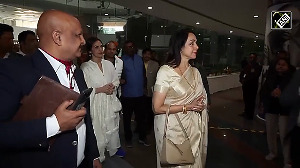If credit is not going to flow in response to a policy rate cut, while inflationary pressures, as well as expectations, may be stoked, a rate cut may not be appropriate at this point
 With inflation rates having dropped sharply last month, expectations that the Reserve Bank of India (RBI) will reduce the repo rate in its next policy review announcement on December 2 are growing. The finance minister, like many of his predecessors, has said that he would like to see this happen. Admittedly, this view is on much stronger ground today, with inflation measured by the Consumer Price Index (CPI) and the Wholesale Price Index (WPI) for last month having come in at 5.5 per cent and 1.8 per cent respectively, both representing multi-year lows.
With inflation rates having dropped sharply last month, expectations that the Reserve Bank of India (RBI) will reduce the repo rate in its next policy review announcement on December 2 are growing. The finance minister, like many of his predecessors, has said that he would like to see this happen. Admittedly, this view is on much stronger ground today, with inflation measured by the Consumer Price Index (CPI) and the Wholesale Price Index (WPI) for last month having come in at 5.5 per cent and 1.8 per cent respectively, both representing multi-year lows.
Earlier this year, the RBI had laid out a gradual adjustment scenario, with the CPI inflation being held to eight per cent in January 2015 and six per cent a year later. This scenario has been rendered largely irrelevant by the sharp drop in oil prices beginning a few months ago. In addition to this, fears about a spike in food prices consequent to the weak monsoon have proved to be unwarranted.
The increase in rice prices has moderated as a result of open market sales from the buffer stock and a very modest increase in the procurement price announced before sowing commenced. Vegetable prices have also softened as a result of the late recovery in rainfall. Overall, if both the oil and food price trends persist, inflation is bound to continue moderating and the repo rate cut is appropriate.
However, as always, there are two sides to any story. Two factors need to be taken into consideration in the argument against a cut at this point. First, while the inflation numbers have undoubtedly come off sharply as a result of oil prices, it is not certain that the favourable trend will persist. If it reverts to its earlier level of about $105 a barrel, the RBI may be compelled to raise rates again to reinforce its commitment to controlling inflation. Even if oil prices remain steady, other shocks still loom, particularly on the fiscal front, with revenues growing at a far slower pace than anticipated by the Budget. A larger than budgeted deficit could re-stoke inflationary pressures, once again tying the RBI’s hands with respect to its ability to reduce rates meaningfully.
Second, even if the RBI decides that it’s time to provide a growth stimulus, there are questions about the banking system’s appetite and capacity to provide commercial credit, which is risky. The burden of non-performing assets weighs so heavily on banks, particularly the public sector ones, that they seem to be content investing incremental deposits in government securities. If credit is not going to flow in response to a policy rate cut, while inflationary pressures, as well as expectations, may be stoked, a rate cut may not be appropriate at this point.
On balance, therefore, it is better to maintain the status quo on December 2. If the overall trend towards moderation in inflation continues for the next few months and oil prices stabilise or fall further, the next milestone for the RBI could be the Budget to be presented in February. If there is comfort in those numbers by way of the deficit target having been met and a credible set of projections for 2015-16, a much stronger case for a cut can be made then.











